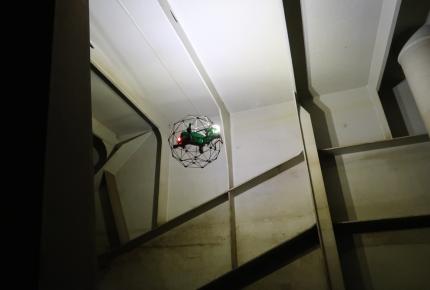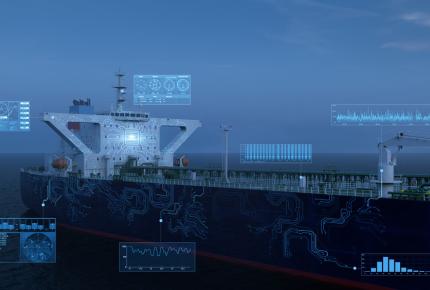Reexamining remote surveys through expert eyes
Marine industry remote surveys have recently undergone a major transformation. Since the early 2000s, classification societies have been expanding remote survey capabilities, developing new processes and choosing the right digital tools.
In 2020, the COVID-19 pandemic increased the need for remote surveys, as ports closed and onboard surveys became impossible. While onboard surveys resume, marine surveyors and digital experts can now take a step back and evaluate the last two years. For classification societies, this represents a chance to diagnose remote surveys, assessing both successes and areas for improvement, and understanding how to meet shipowners’ needs and regulatory requirements.
Why shipowners chose remote surveys
COVID-19 certainly accelerated adoption of remote surveys, but it was really just a continuation of prevailing trends. Shipowners, equipment manufacturers and classification societies had already begun digitalizing—integrating new digital platforms, tools and technologies into their everyday activities.
Before the pandemic, remote surveys granted three primary benefits to shipowners. First, they reduced risk, removing marine surveyors from potentially dangerous conditions onboard. Second, remote surveys reduce environmental impacts while reducing the costs for shipowners, because surveyors do not need to travel. Third, they provided greater flexibility and convenience, providing shipowners with more options for undergoing occasional surveys.
As the onset of COVID-19 ushered in new health and safety restrictions, remote surveys gained a new purpose: helping shipowners maintain compliance. Hundreds of owners requested remote surveys to extend certificate validity and postpone periodical surveys. This enabled ships to continue sailing safely during uncertain times and helped shipowners ensure business continuity.
Fleet Management Director
Bureau Veritas M&O
Remote surveys are rapidly becoming a fixture for classification operations. They represent a long-term opportunity for classification societies to build expertise, pursue digitalization and follow new regulatory areas. At Bureau Veritas, this is exactly the sort of challenge we relish, and we are looking forward to the next waves of remote survey made possible by further innovation.
What marine surveyors and digital experts learned
Despite their growing popularity, the marine industry is still adjusting to these new services. Thanks to feedback from shipowners and managers, marine surveyors and digital experts, classification societies have identified key challenges for conducting remote surveys.
First, marine surveyors spend a great deal of time on the preparation phase. To conduct a remote survey to the same standards as an onboard survey, all relevant documentation must be collected and reviewed, in depth and in advance. This has the advantage of making the surveys themselves more efficient and better organized, enabling surveyors to streamline inspection. But it also means that surveyors may spend up to twice as long preparing for remote surveys as traditional surveys.
Second, remote surveys can risk overburdening crew, whose jobs are already taxing and further complicated by the global health crisis. In the case of a remote survey, crewmembers use their smartphone to act as the surveyor’s eyes and ears. At all times, surveyors remain fully responsible for a remote survey as they would in the case of a traditional survey. Nevertheless, concerns were raised under COVID-19 as fatigued crews, already under increased pressure and time at sea, also confronted the necessity of dealing remotely with external experts and agents.
Third, there remains the critical challenge of technological limitations, such as a lack of internet connectivity. Some vessels have no internal WIFI network; others lose connectivity in confined spaces or in rooms below the waterline such as machinery spaces where inspection nevertheless is critical. Sometimes connectivity is limited by vessel location, such as for ships anchored in remote areas. And sometimes the problem lies with ports and ship terminals, which may have limited 3G or 4G coverage. Most shipowners are now investing in improving their bandwidth subscription to VStat suppliers. However, ensuring efficient onboard connectivity requires capex investments for retrofitting in-service vessels or and new builds, which will take time to become standard practice.
Finally, marine experts are grappling with the narrow scope of remote surveys and a lack of regulatory guidance. Some classification societies have had to reconsider the scope of their remote surveys offers with a more cautious and conservative approach. Harmonizing the scope of eligible survey items, conditions and limitations for remote surveys is a growing priority for the International Association of Classification Societies’ (IACS). The IACS has already created a working group to address this challenge, to develop a Unified Requirement on the subject. This has the aim of setting out IMO proposals to be discussed by Flag Administrations and ultimately provide clear guidelines to classification societies.
Our approach to remote surveys
Bureau Veritas has long been honing its remote survey offer, which includes both fully and partly online remote options. Since 2019, we have continuously optimized our remote survey processes and technologies to meet shipowners’ rapidly changing needs. We notably opened seven Remote Survey Centers – in Rotterdam, Piraeus, Singapore, Paris, Miami, Dubai and Shanghai – to manage remote survey requests across time zones. Our digital experts also introduced new functionalities to the VeriSTAR Info platform. These enable shipowners to digitalize all remote survey processes and client interactions from their initial request up to the issuance of the report.
To help clients overcome remote survey challenges, Bureau Veritas has developed specific solutions. In the case of a lack of onboard connectivity, for example, our surveyors provide sequential surveys. When the signal is strong enough, the surveyor works online in real time. If this is not possible, the ship superintendent or chief engineer can take videos and pictures to share with the surveyor once a connection is available. This has led our digital experts to select tools that include augmented reality features that also optimize video streaming and picture quality despite challenges of onboard bandwidth. These tools also do not require any hardware, license or downloads from the client’s side.
Our remote survey approach is rooted in classification, with careful attention paid to the scope and regulatory context to ensure optimal safety conditions for the ship and its crew. Our offer conforms with existing requirements, and will evolve as the IMO and IACS extend the scope of remote surveys.
While no one can predict exactly how remote surveys will develop going forward, Bureau Veritas experts believe that they are here to stay. We intend to continue transforming our remote survey offer to meet client expectations, industry standards and regulatory requirements.












